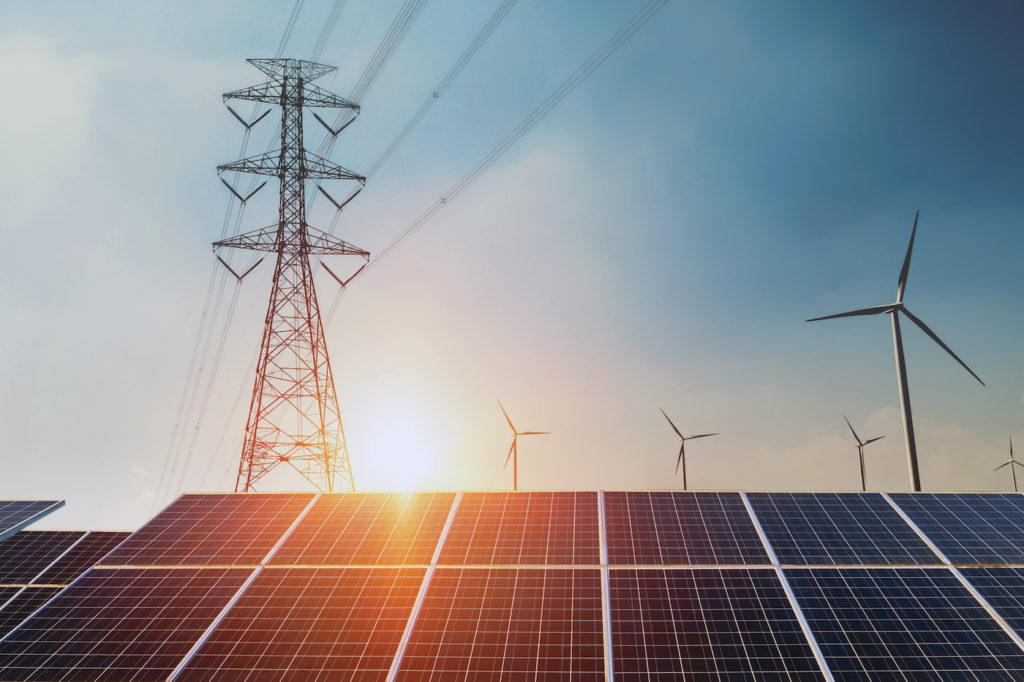
Inflation Reduction Act and Bipartisan Infrastructure Law Resource Center

About the Resources
This Resource Center can be a starting point for finding out how to access the investments in the Inflation Reduction Act and Bipartisan Infrastructure Laws. Use the menu above or the links here to navigate to each of the resources.
A USER GUIDE TO THE INFLATION REDUCTION ACT
The transformational power of the Inflation Reduction Act cannot be overstated. This legislation—passed by Senate and House Democrats and signed into law by President Joe Biden on August 16, 2022—will revitalize U.S. manufacturing, grow clean energy, and support and create good union jobs across the country. It will tackle climate change by reducing emissions up to 42% by 2030 and create the good-paying, union jobs we need to give all workers the opportunity for a middle-class life. The Inflation Reduction Act demonstrates that we can have both good jobs and a clean environment.
This User Guide explores the goals, timelines, and implementation mechanisms for policies in the Inflation Reduction Act in eight broad areas:
- Clean Energy;
- Clean Technology Manufacturing;
- Industrial Transformation;
- EV Deployment, Manufacturing, and Supply Chain;
- Transmission;
- Buildings;
- Energy Transition for Workers and Communities; and
- Resilient and Healthy Communities.
In doing so, we hope this resource helps ensure the funds from the Inflation Reduction Act are maximized to benefit workers, their families, and communities by achieving job quality as well as climate, health, and equity gains.
The document also explores how the law addresses job quality and equity; breaks down the implementation mechanisms included in the legislation and explains how they operate; outlines some key provisions in the law; and provides an easy-to-reference grid of some of the key provisions and how they work.

A USER GUIDE TO THE BIPARTISAN INFRASTRUCTURE LAW
The investments in the Inflation Reduction Act complement those in the $1.2 trillion Bipartisan Infrastructure Law (BIL)—also known as the Infrastructure Investment and Jobs Act—which was signed into law by President Biden on November 15, 2021. The investments and policies included in this law—some of which are already being released by federal agencies—will rebuild and modernize our nation’s crumbling infrastructure and create good-paying, union jobs across the nation while making some important investments to address climate change. At the same time, there are concerns with some of the law’s provisions, and careful attention to implementation will be needed to ensure the law translates into benefits for the environment and communities.
The purpose of this “user guide” is to act as an easy reference for a number of policies and programs included in the BIL in eight broad areas:
- Clean Energy Projects and Infrastructure;
- Manufacturing and Industrial Transformation;
- Water;
- Buildings and Schools;
- Fairness for Workers and Communities;
- Community Resilience;
- Transportation; and
- Methane and Natural Gas Distribution.
We explore the policies, timelines, and implementation mechanisms for each of these policy areas.
We also provide some background about the legislation, explore what is missing from the bill and what can be done to ensure job quality and equity, break down the implementation mechanisms included in the bills and how they operate, provide a look at some key provisions in the bill, and provide easy to reference grids of key provisions and how they work.

Fact Sheets and BlueGreen Alliance Resources
These BGA fact sheets, program specific user guides, toolkits, maps, and reports break down the investments in the Inflation Reduction Act and Bipartisan Infrastructure Law:
- Fact Sheet: Clean Energy Tax Credits in the Inflation Reduction Act
- Fact Sheet: Clean Manufacturing Investments in the Inflation Reduction Act
- Fact Sheet: Clean Vehicle Provisions in the Inflation Reduction Act
- Roadmap to Navigating Federal Funding for Public Buildings
- Map and Analysis: Building a Strong Manufacturing Base for Clean Energy in the U.S.
- Best Practices for Implementation: How the Lessons from the Bipartisan Infrastructure Law can Ensure the Inflation Reduction Act Delivers Good Jobs and Community Benefits
- Electric Vehicle Charging Infrastructure Implementation Guide
- Inflation Reduction Act and Bipartisan Infrastructure Law: Investments in Energy Communities
- Making Clean Energy Tax Credits Deliver for the Public: A User Guide for Governments, Schools, and Nonprofits
- Domestic Content Bonus for Clean Energy Tax Credits: A User Guide for Project Developers
- Companies Succeed, Communities Benefit: A Bluegreen Alliance User Guide for Companies to Demonstrate Community Benefits in Federal Funding Applications
- Energy Efficiency and the Inflation Reduction Act: A User Guide for Owners and Developers of Affordable Housing
- BlueGreen Alliance National Electric Vehicle Infrastructure (NEVI) Guide
- Political Economy Research Institute (PERI) report commissioned by the BlueGreen Alliance
- Princeton and Dartmouth Report funded by the BlueGreen Alliance
- Additional Resources on the BIL and Inflation Reduction Act
-
- White House landing page for the Bipartisan Infrastructure Law (BIL) and Inflation Reduction Act.
- White House guidebook on the BIL
- White House guidebook on the Inflation Reduction Act
- Maps of Progress: Here you can view BIL funding already out the door.
- White House BIL state-by-state factsheets: Updated descriptions from the White House of BIL funding and its impacts across the country.
- Department of Labor landing page for their Good Jobs Initiative: Including dedicated resources and case studies for workers, employers, and government entities.
- EPA landing page and interactive tools on the State Revolving Funds (SRFs) for drinking water, as related to the BIL.
- Department of Energy main page on BIL program and funding opportunity announcements.
- Department of Transportation (DOT) main page on BIL implementation (sorted by sub-agency).
- Department of Transportation recorded BIL webinars: Video introductions to BIL funding specific to each DOT sub-agency.
- The White House BIL technical assistance guide to help state and local partners with BIL implementation.
- White House Inflation Reduction Act Tribal Guidebook
- CleanEnergy.gov: A White House website with resources and examples to help guide consumers, families, and businesses through the tax credits and rebates passed into law by the Inflation Reduction Act (e.g., rooftop solar panels, electric heat pumps, home energy appliances, etc.).